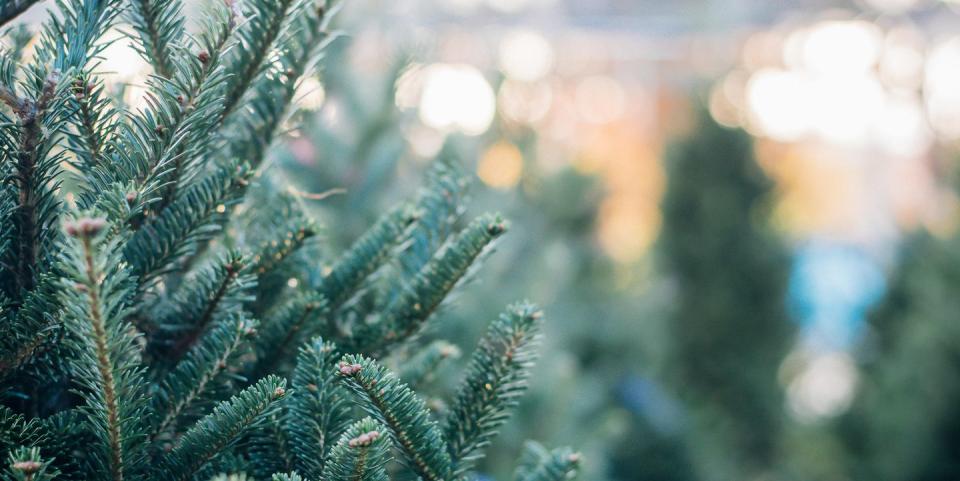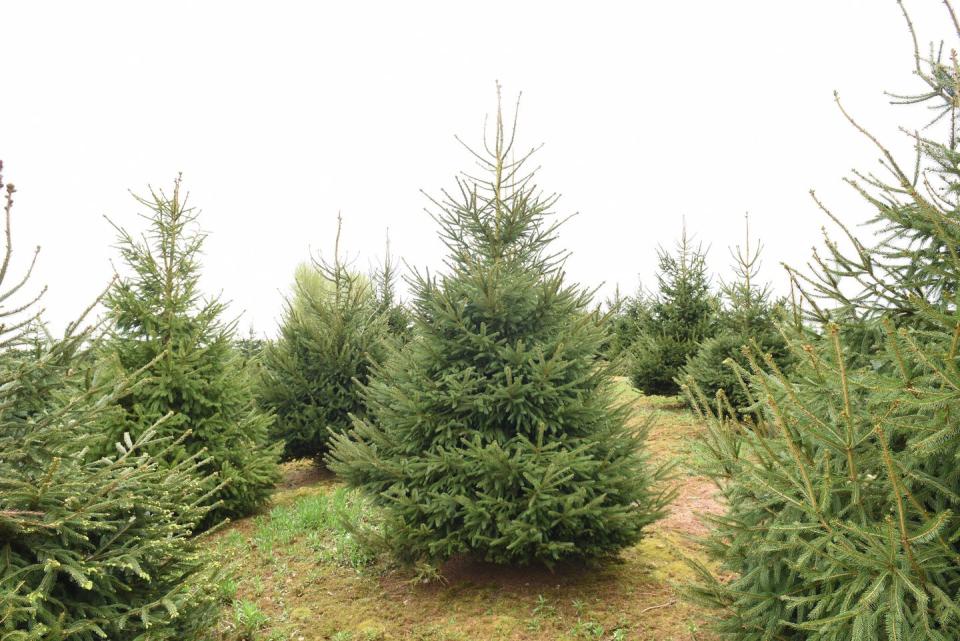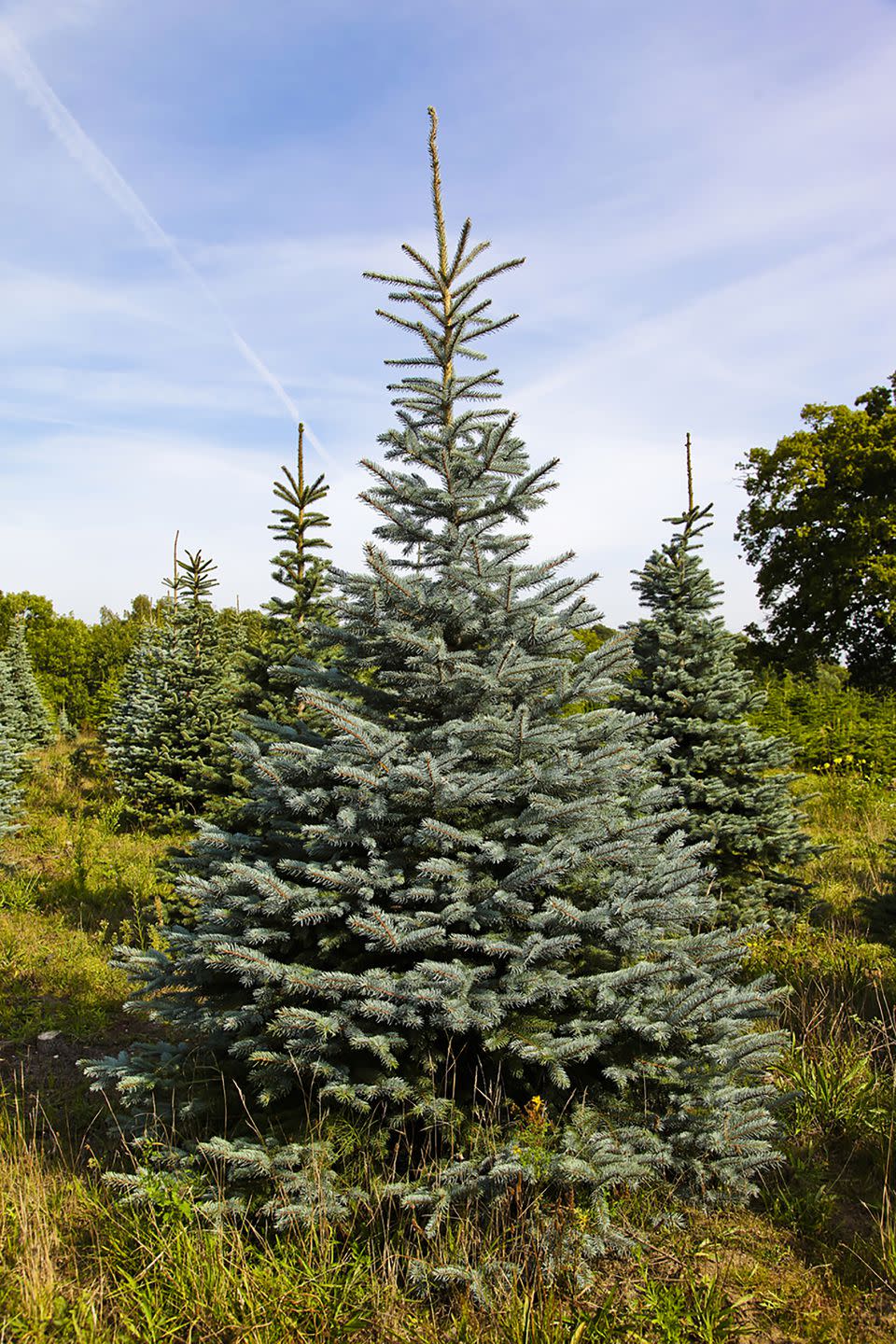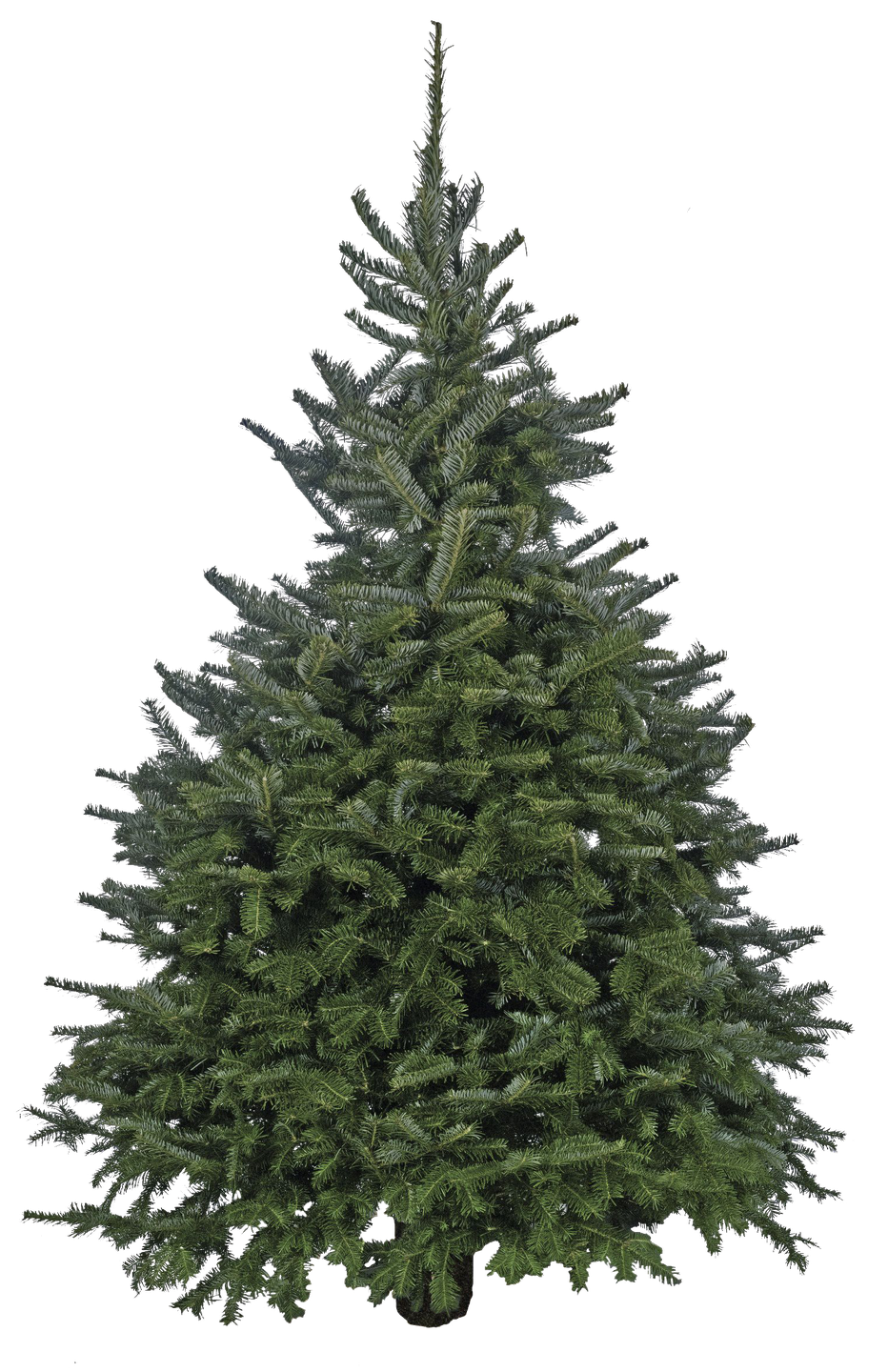Find the perfect real Christmas tree for your home

It’s the one festive icon which never loses its appeal. According to The British Christmas Tree Growers Association (BCTGA) around seven million Christmas trees are bought in Britain each year, but the choice can be mind-boggling.
So what to choose to suit your home? Here’s the lowdown on the most popular varieties:
Nordmann Fir
Nordmann Fir (Abies nordmanniana) is a hugely successful Russian import – about 80 per cent of us buy one, says BCTGA. Its popularity has much to do with the fact that it doesn’t shed needles, so it’s good if you like your tree up for a month. Reg Hendy, from the family-run Langford Lakes Christmas Tree Farm in Somerset, says: 'The Nordman fir is our most popular variety. The average tree has taken between eight to 10 years to grow. Their long, dark green needles are stunning and if the tree is stood in water, they will remain well into the New Year.'

Key features: Dark green, glossy and soft leaves, strong branches and a traditional full and bushy conical shape. However, the scent isn’t strong and it can be expensive as it takes years to be ready to sell.
Benefits over other types of tree: Minimal needle-drop. If you have a smaller room, look for the Swedish-style Nordmann Fir as it’s thinner than the standard version.
Norway Spruce
Norway Spruce (Picea abies) has been popular since Victorian times and is one of the most recognisable of Christmas trees. It grows widely in this country – this means it’s widely available and reasonably-priced. BCTGA estimate at least one in 10 of us opt for one. 'The Norway spruce is a traditional favourite with its well-known scent,' says Reg Hendy. 'British-grown spruce will have been regularly pruned to produce a well-balanced tree.'

Key features: Bright green, bushy, with dense pointed spiky needles, it’s usually a tidy pyramid shape with a typical Christmas tree smell. However, the needles drop quickly so take care around children and pets and remember to water regularly and place away from radiators.
Benefits over other types of tree: It’s great value and has a lovely scent.
Blue Spruce
Blue Spruce (Picea pungens) is the official tree of Utah and Colorado and its distinctive cool-blue hue is helping to make it an attractive contender to the traditional Norway spruce. 'They have an amazing festive scent,' says Mark Sage, Head of trading, horticulture at Wyevale Garden Centres. 'And pot-grown ones are ideal to pot on or plant in the garden.'

Key features: Elegant and symmetrical, unlike the Norway Spruce, it holds its needles well. These trees tend to be ultra-prickly so not ideal for younger families.
Benefits over other types of tree: It can be a very stylish choice.
Fraser Fir
Fraser Fir (Abies fras eri) is the best-selling Christmas tree in America and looks similar to the traditional Norway Spruce but doesn’t drop its needles as quickly.

Key features: The needles are soft, wide, flat and dark green with a silver-tinged underside and a sharp balsam scent. There's lots of space between the branches for lights and tinsel trimmings. 'It’s the right choice for you if you are not intending to hang heavy ornaments,' says Christmas tree expert Deemer Cass at Fantastic Services. 'However, I think it is the most fragrant Christmas tree.'
Benefits over other types of tree: Excellent choice for a hallway or alcove as it has a compact bottom circumference.
You might also like...
DOUGLAS FIR
Douglas Fir (Pseudotsuga menziesii) is native to North America, but has been grown in most parts of Britain for almost 200 years.
Key features: Douglas Firs tend to be tall – in the wild they can grow up to 55 metres high. The scent is citrusy rather than Christmassy, but the soft blue/green needles give off a lovely sheen.
Benefits over other types of tree: Perfect if you want a proper statement tree.
SCOTS PINE
Scots Pine (Pinus sylvestris) is one of just three native British conifers. The national tree of Scotland, it’s found in the Highlands of Scotland and thrives on heathland.
Key features: The foliage is bright blue-green. It’s quite an old-fashioned looking tree and can be rather impenetrable and notoriously prickly.
Benefits over other types of tree: A good choice if you want a quirky shape, it’s also low-maintenance and has a lovely fragrance.
NOBLE FIR
Noble Fir (Abies procera) is American, native to forests in Washington and Oregon. It was introduced to Britain in 1830, but tends to only thrive in wetter areas.
Key features: Very luxurious foliage. The upwards-curving branches are tinged with silvery-grey and are renowned for their strength.
Benefits over other types of tree: Those practical branches mean it’s suited to hold large or heavy ornaments and lights.
SERBIAN SPRUCE
Serbian Spruce (Picea omorika) is a recent arrival to Great Britain, but it’s proving popular as a low-maintenance, non-dropping choice.
Key features: The branches, with a dark green topside and silver underneath, often sweep downwards in a delicate way. So it looks graceful but isn’t great for weighty ornaments.
Benefits over other types of trees: It has nice soft needles, so good for children and pets and suited to modern homes as it’s a streamlined shape.
LODGEPOLE PINE
Lodgepole Pine (Pinus contorta), usually grown in Britain for timber, is not your typical market stall or supermarket tree, so you will likely have to track one down from a specialist grower.
Key features: Tends to be a natural irregular shape with yellowish-green foliage and straight upright branches. Usually keeps its needles well.
Benefits over other types of tree: It’s sure to be a talking point amongst your guests, as it’s quite an unusual choice as a Christmas tree these days.
('You Might Also Like',)

 Yahoo Finance
Yahoo Finance 
